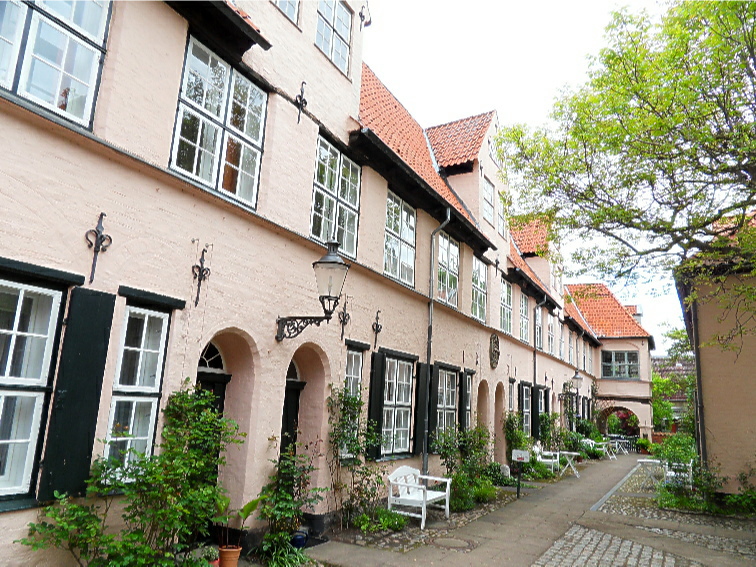Lübeck was first settled in Neolithic times (10,000 BC) and grew steadily, until a marked expansion around 700 AD with the movement of Slavic people. In the 9th century the king of the Franks, Charles I (r. 768-814), better known as Charlemagne, expelled the Saxons from the area in an attempt to Christianise the population. He then brought in Polabian Slavs to populate the area. In the 10th century it became an important settlement and resulted in the construction of a castle. This and the entire settlement was destroyed in 1128 by the Slav tribe of the Rani.
The modern town was founded in 1143 by Adolf II of Holstein (1128-1164) Count of Schauenburg and Holstein but it was Henry the Lion (1129-1195), Duke of Saxony who was instrumental in its development.
In 1226 Emperor Frederick II (1195-1250) made the town an Imperial Free City, enabling it to become the Free City of Lübeck and paving the way for it to become, in the 14th century, the capital of the Hanseatic League. The Hanseatic League was a confederation of merchant guilds that developed from the 13th century to dominate trade in the Baltic. Lübeck’s position as a major port enabled it to be central in that development and the council dominated by merchants was to ensure all decisions were based on the interest of trade.
In the 14th century, Lübeck was the largest and most powerful member of the League, and the affluence that brought enabled it to build substantially, so that in 1375 Emperor Charles IV (1316-1378) named Lübeck one of the five "Glories of the Empire", along with Venice, Rome, Pisa and Florence. The city also created a series of laws that were to be accepted throughout the Baltic region.
During the 15th and 16th centuries, Lübeck and the Hanseatic League were involved in a number of conflicts with Denmark and Norway, with varying results.
In 1937 Adolf Hitler withdrew its independence, due in part to the fact that the city had refused to allow him to campaign there in 1932.
During World War II, Lübeck was the first German city to be subjected to substantial bombing, and, during a raid on 28 March 1942, severe damage was inflicted on the historic centre, which was subsequently repaired and renovated after the war.
Today, much of the old town maintains its medieval appearance, with many of its old buildings and narrow streets. Originally the town was surrounded by a wall with access being gained though its four town gates, only two of which remain. These are the Burgtor gate in the north, which was built around 1444 and the famous Holstentor gate at the west, which was constructed from 1464 to 1478 and is of brick Gothic construction with two round towers.
The old town centre contains seven church steeples, the oldest of which being the Lübecker Dom (the city's cathedral) which dates back to 1173 having been completed in 1230 in Romanesque style. This was converted to Gothic style between 1266 and 1335. The cathedral suffered extensively in the bombing raid of 28 March 1942, and the reconstruction work was not completed until 1982. The Marienkirche (Saint Mary's church), was constructed between 1250 and 1350 and was the symbol of power and prosperity for the city. Built of brick in the Gothic style, it has the world’s highest brick vault. Like the cathedral, it suffered extensively during the raid of 28 March 1942.
The city contains many buildings in the Gothic, Renaissance, Baroque and Neo-classical style, including churches, abbeys, merchants' houses and salt storehouses and an array of narrow lanes and streets. The Hospital of the Holy Ghost is one of the oldest hospitals in Europe, and the town hall provides a unique vision of the architecture from the medieval period. Because of its uniqueness, in 1987 Lübeck was declared a UNESCO World Heritage site.

